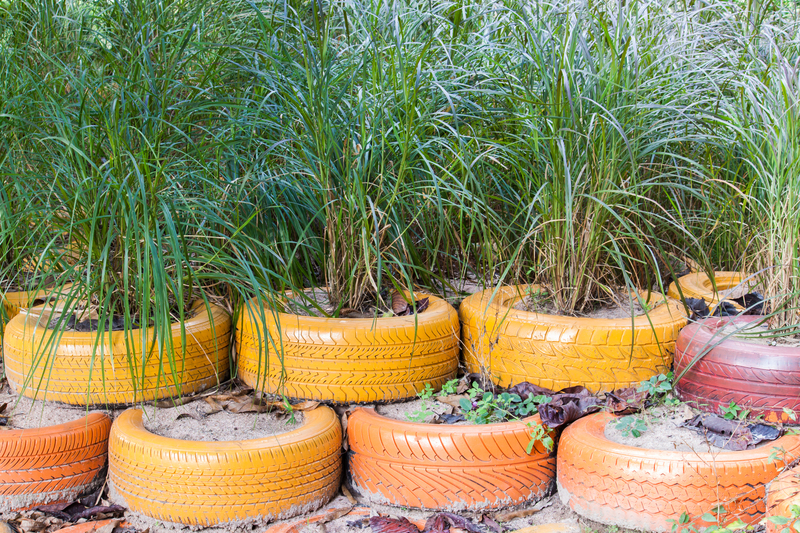Achieve a Minimalist Lifestyle with Clutter Control Tactics
Minimalism is gaining momentum in today's fast-paced, consumerist world. If you are feeling overwhelmed by possessions or want to create a peaceful and productive environment, achieving a minimalist lifestyle with effective clutter control tactics can transform your life. This comprehensive guide will help you understand the principles of minimalism, the benefits of decluttering, and provide actionable, easy-to-follow strategies to maintain order and serenity in your home.
Understanding Minimalism: More Than Just Fewer Possessions
Minimalism is not simply about owning less-it's a philosophy that focuses on intentional living by eliminating the unnecessary and making room for what truly matters. By embracing minimalist living through clutter management, you gain freedom from distractions, save time, reduce stress, and foster an environment where creativity flourishes.
Key Principles of Minimalist Living
- Intentionality: Only keep items that serve a purpose or bring you joy.
- Simplicity: Simplify systems, schedules, and possession for greater clarity.
- Quality Over Quantity: Invest in fewer, well-made items rather than accumulating many cheap ones.
- Mindful Consumption: Consider the impact and necessity of every purchase.
- Freedom from Comparison: Focus on your unique journey, not societal or peer expectations.

Why Clutter Control Is Essential for Minimalism
Clutter isn't just a physical eyesore. Studies show that a chaotic environment can increase stress levels, reduce productivity, and negatively impact mental health. Minimalism with effective clutter control brings order to your surroundings, helping you to concentrate, relax, and live intentionally. Here are a few scientific benefits to motivate you:
- Enhanced Focus: A tidy environment allows for clearer thinking and better task performance.
- Improved Well-being: Less clutter often means less anxiety and a greater sense of control.
- More Free Time: Fewer belongings require less maintenance, cleaning, and organizing.
- Financial Savings: Mindful purchasing and maintaining what you have reduces unnecessary expenses.
Clutter Control Tactics to Achieve a Minimalist Lifestyle
Ready to begin your minimalist journey? Mastering clutter control tactics is essential to sustaining a minimalist lifestyle. Let's delve into actionable steps that create real results.
1. Start With a Vision and Set Goals
- Visualize what a minimalist life looks like for you.
- Set clear, measurable goals (e.g., "Clear out the wardrobe by next weekend" or "Keep countertops free of non-essentials").
- Document your objectives by writing, drawing, or creating a vision board.
2. Declutter Methodically, One Area at a Time
Trying to tackle your whole home in a single day is overwhelming. Segment your decluttering efforts:
- By Room: Focus on one room-such as the bedroom or kitchen-before moving to the next.
- By Category: Sort through one category (like clothes, books, or kitchenware) at a time.
- By Time: Set a timer for 15-30 minutes daily and address a small section.
The key is consistency; regular, focused sessions will yield big results.
3. Use the Four-Box Method
A classic but effective tactic for clutter management is the four-box method:
- Keep: Items you use regularly and love.
- Donate/Sell: Items in good condition you no longer need.
- Trash: Broken, expired, or unusable things.
- Relocate: Items that belong elsewhere.
This practical system avoids indecision and ensures every item finds its place or purpose.
4. Ask the Right Questions
- When did I last use this?
- Does this item serve a purpose or bring me joy?
- Would I buy this again today?
If an item doesn't meet your criteria, let it go.
5. Adopt Storage Solutions That Support Minimalism
Once you've pared down your possessions, organizational tools can maintain order. Choose solutions that encourage simplicity:
- Clear Storage Bins: Easy visibility prevents forgotten clutter.
- Vertical Shelving: Utilizes wall space, keeps surfaces clear.
- Dedicated Spaces: Assign every item a home to discourage future mess.
6. The "One-In, One-Out" Rule
To prevent re-cluttering, resolve that whenever you bring a new item in, one must go out. This powerful rule keeps possessions to a mindful minimum.
7. Create Daily and Weekly Routines
- Daily: Spend 10 minutes tidying up surfaces and putting items back in their place.
- Weekly: Reassess high-traffic areas (like entryways) and remove anything that doesn't belong.
Routine maintenance is crucial for long-term success on your minimalist lifestyle journey.
Room-by-Room Guide to Minimalism and Clutter Control
Minimalist Entryways
- Keep only essential outerwear, shoes, and bags near the door.
- Utilize wall hooks and an attractive tray for keys or mail.
- Regularly clear out seasonal or excess items.
Minimalist Living Rooms
- Select only a few, multi-functional pieces of furniture.
- Display cherished decor items or art sparingly.
- Store remotes, books, and magazines in hidden compartments or baskets.
Minimalist Kitchens
- Keep countertops as clear as possible.
- Limit duplicates (e.g., only one spatula or set of mixing bowls).
- Organize pantry and fridge by category; discard expired items weekly.
- Store bulky appliances out of sight or donate if seldom used.
Minimalist Bedrooms
- Maintain only necessary furniture and a few treasured personal items.
- Clear bedside tables except for essentials (lamp, book).
- Organize clothing by type and season--donate or store off-season items.
Minimalist Bathrooms
- Eliminate expired toiletries and limit products to daily essentials.
- Utilize drawer organizers and shelves for a tidy look.
- Keep towels minimal-enough for family and one guest set.
Digital Minimalism: Decluttering the Virtual Space
Minimalism isn't just about physical belongings. Our digital lives can accumulate overwhelming clutter too. Effective clutter control tactics extend to digital minimalism:
- Organize Desktop & Files: Use clear, specific folder names. Recycle obsolete files regularly.
- Unsubscribe from Emails: Remove yourself from email lists you don't need.
- Streamline Apps: Delete apps you seldom use from your phone or computer.
- Schedule Digital Downtime: Minimize screen time to maintain focus and reduce mental clutter.
Minimalist Mindset: The Foundation of Clutter Control
A sustainable minimalist lifestyle starts with a shift in mindset. Develop habits and perspectives that support long-term simplicity by:
- Considering Needs vs. Wants: Practice intentional shopping and resist impulse buys.
- Gratitude and Contentment: Appreciate what you have rather than seeking more.
- Regular Reflection: Make a habit of assessing what's truly essential in your life.
- Letting Go of Guilt: Don't keep things out of guilt or obligation--release them for your own well-being.
Common Challenges and How to Overcome Them
Sentimental Clutter
We all have items with emotional attachments. Minimize emotional clutter by keeping only a small, curated selection and photographing items you want to remember but no longer use. Remember, your memories reside within you, not your things.
Overcoming Procrastination
Set realistic expectations and deadlines. Break projects into small tasks and enlist a supportive friend or family member to keep you accountable.
Family or Housemate Resistance
Communicate the benefits of minimalist living and set boundaries for your personal space. Lead by example and gradually share tactics that work for you.
Benefits of Achieving a Minimalist Lifestyle Through Clutter Control
- Greater Peace & Calm: A simplified environment encourages relaxation and mindfulness.
- Increased Productivity: Fewer distractions fuel creativity and efficiency.
- Improved Relationships: Minimalism creates space for meaningful interactions and time together.
- Environmental Impact: Less consumption reduces waste and your ecological footprint.
Minimalism with clutter control is not a one-time project but an ongoing commitment to intentional living. Every small step towards less clutter brings you closer to the tranquil, fulfilling lifestyle you desire.

Clutter-Free Minimalist Lifestyle: Frequently Asked Questions
How Do I Stay Motivated During My Decluttering Journey?
Celebrate small victories by journaling your progress or sharing before-and-after photos. Remind yourself regularly of the reasons you want a clutter-free minimalist lifestyle.
Is It OK to Have Collections in a Minimalist Home?
Yes, minimalism is about intentionality, not deprivation. Keep collections that truly bring joy, but display and store them thoughtfully to avoid clutter.
What If My Family Isn't On Board?
Model the benefits through your own actions. Respect shared spaces, and focus on decluttering your belongings first. Over time, others may be inspired to join.
How Often Should I Re-Declutter?
Set quarterly or seasonal decluttering sessions to ensure your home remains organized and to re-evaluate what's essential.
Conclusion: Start Your Journey to Minimalist Living Today
Adopting a minimalist lifestyle through clutter control tactics is transformative. By making thoughtful decisions about what you own and using practical clutter management strategies, you pave the way for a home and mind that are calm, uncluttered, and full of purpose. Remember, minimalism is about creating space for what matters most. With consistent action and the clutter control tips outlined here, you can achieve-and sustain-the minimalist lifestyle you've always envisioned.
Take the first step today, and enjoy the freedom and clarity that comes from living with less.